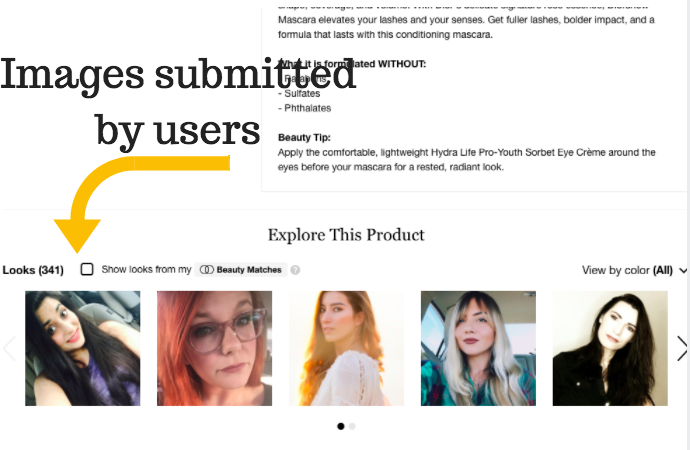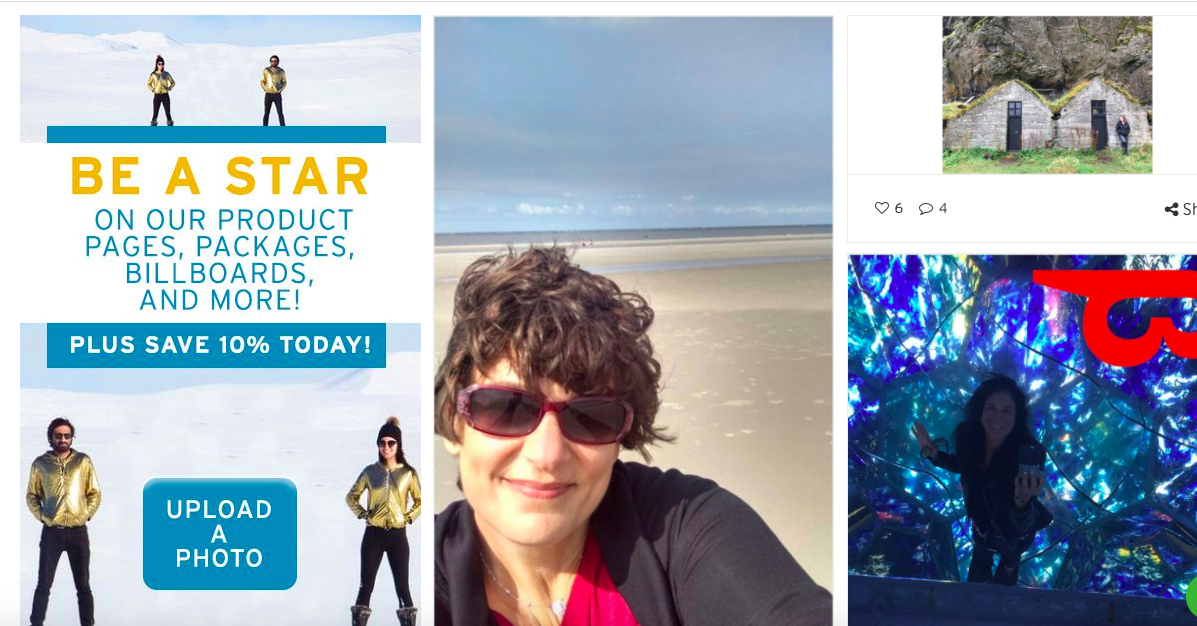
Four score and 20 years ago (OK, it was 2014), I wrote about the magic of user-generated content and what an important element it is in your content plan.
It’s safe to say since that time the power of UGC has only increased.
Not to mention the platforms and techniques available to display it, distribute it, and use it for promotion, community building, and lead generation and conversion.
So, when Paula Kiger and I banded together to participate in the Bridging the Gap campaign, a comparison of our different generational views on user-generated content was one of the top things on our list.
How Does Our Experience of the World Compare?
The Bridging the Gap Campaign brings Millennials and Baby Boomers together to learn about each other and compare world views.
Paula and I already know the other is awesome so we bent the rules.
We focused on our different views on an issue important to communications pros because our jobs are to understand and respond to how others think.
We were both drawn to the Bridging the Gap campaign as a way to take a more detailed look at differing perspectives from a generational viewpoint.
The truth is Paula is definitely more digitally savvy than I am, and I’m on the upper cusp of millennialhood, so our relationship might be an outlier in many ways.
But maybe that’s the point?
While different generations might have different life stages and experiences to direct their perceptions and decisions, in the end, the “gap” to bridge isn’t that big.
It’s sort of like one of those team building games where you try to figure out how to get to the other side of a river with only a small amount of supplies.
There are many different paths to take to get there, but everyone still ends up on the same side of the river.
User-Generated Content Has Generational Appeal
One thing is definitely true: no matter if you are nine or 90, user-generated content is a powerful influence on human behavior.
To give some structure to the pieces we chose, Paula and I picked one for each category described in this analysis by Kantar AddedValue: discovery, fun, status, and wellbeing.
Discovery: Sephora
I’ve been impressed with the way Sephora leverages user-generated content and builds community around their products for some time now.
One thing I love is how they integrate UGC into their sales pages.
If you go to any product page, not only will you see reviews, but you’ll also be able to scroll through actual photos of actual people who have used the products.

To be able to see the product on someone, not just the edited glamour shots, allows me to decide based on reality.
It adds to my trust factor and encourages conversion from lurker to buyer.
Fun: Betabrand
Do you ever go into a store, or see the debut of the “new spring line” in a magazine and think to yourself:
Ugh, why don’t these designers ever make anything I really need.
or…
Is that a brown sack? For $5,000? I could do better than that!
Well, with Betabrand, you can.
Betabrand is an online clothing store based completely on user-generated content.
You can play one of two roles, designer or fashion buyer.
As a designer, you submit your idea for people to vote on.
If you receive enough votes, your idea is crowdfunded.
As a crowdfunding project, you play lead designer while the Betabrand team puts together an actual prototype of the design.
Once it reaches its crowdfunding goal it becomes a fully available product and you just sit back and collect 10 percent of sales.
As a fashion buyer, you vote on the products you want to see pushed to crowdfunding stage.
Once at crowdfunding stage, you can buy products at 30 percent off what they will retail for if they make it through.
You choose the fashions you want to see made readily available.
Oh, and guess who they use as models….that’s right….UGC.

I love this entire concept because it democratizes the fashion industry.
And I have a few design ideas I’ll probably submit in the future.
Status: Target
Do you remember when you got the acceptance letter to the school of your choice?
(I don’t, but work with me here).
If I remembered it, I’m sure I would remember being super excited.
I wasn’t sure what school I was going to choose at the time.
I do know it was a huge relief when the letters came in for my top choices.
It’s a big moment in every college-bound teenager’s life.
Which also makes it a big moment when it comes to A LOT of purchase decisions.
The Target genius Big Data operation makes sure they are there for ALL of your big life milestones.
They’re definitely not one to count themselves out of this one.
In their acceptance letter campaign, Target asked high school seniors to share videos reading acceptance letters from colleges.
Then they compiled the best reactions into a commercial to showcase their commitment to education and increased donations to K-12 education.
And, if you happen to remember them when you do your college dorm shopping, all the better.
Wellbeing: Citizen Scientists
A week ago, I listened to an episode of the Ted Radio Hour podcast (which I’m obsessed with) called “Citizen Scientist.”
It was all about how people, normal people—not researchers or scientists—change the world through crowdsourcing research, information, and wellness trends.
Guests included Joi Ito, Sharon Terry, and Tabetha Boyaijan:
- MIT Media Lab director, Joi Ito, co-created Safecast to help his family in the wake of the 2011 earthquake in Japan.
- Sharon Terry is a mother who became a citizen biomedical researcher on her quest to cure her own kids.
- Astronomer Tabetha Boyaijan has used user-generated content to help astronomers find planets.
Millennials vs. Baby Boomers and User-Generated Content
So where does that lead the battle of the generations?
Take a look at Paula’s post and make your own observations.
Olapic put together an interesting infographic at the beginning of the year which tried to answer this question.
And, at least from my side, these observations ring true.
And what about you? How do you relate to UGC?
Do you think there are generational differences in how we create, use, and engage with user-generated content?